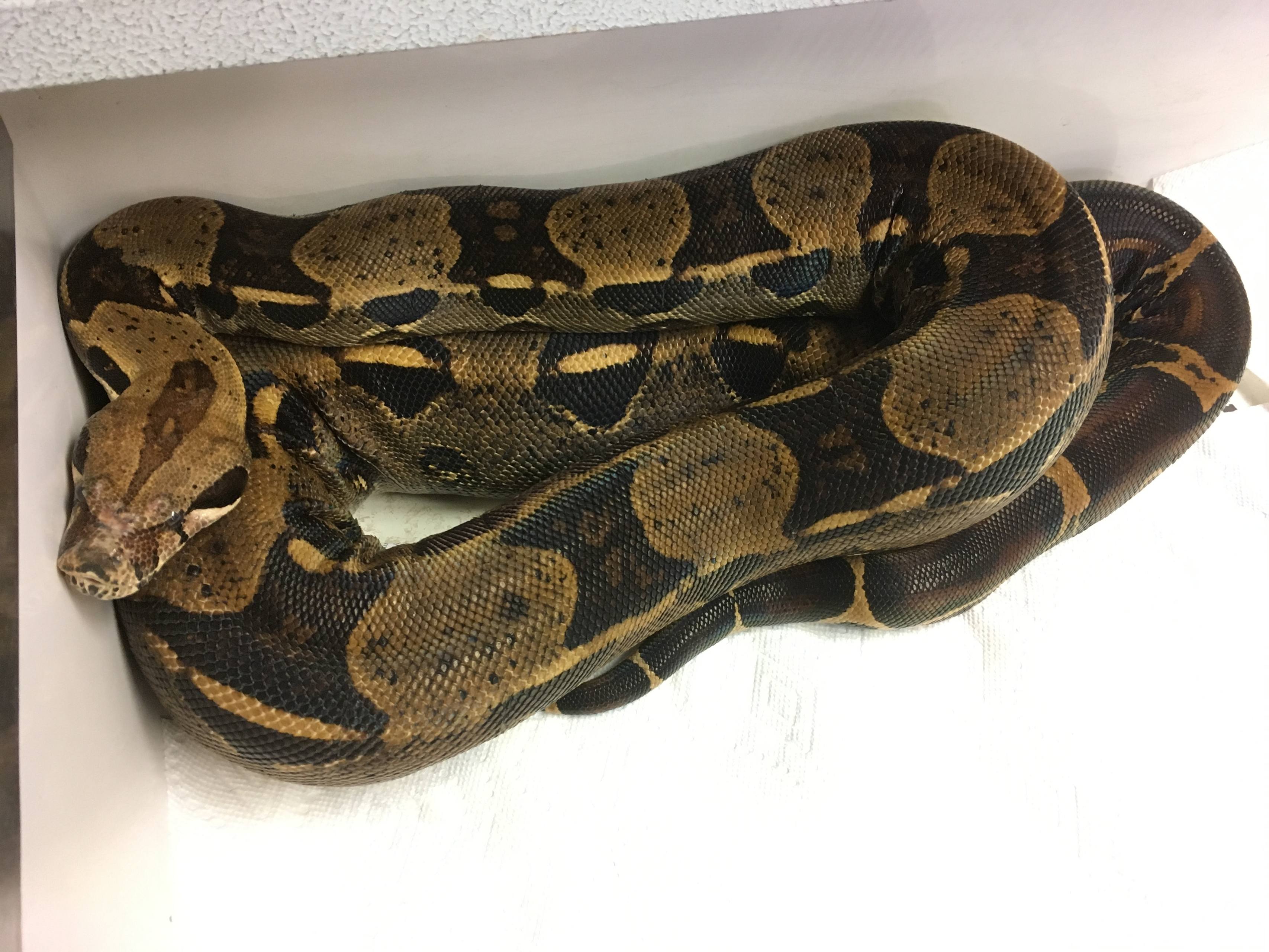Boa Constrictor
Boa Constrictor (Common boa, Columbian boa)
Boa constrictor ssp.

General Information
Family: Boidae
Locale: Central America; eastern Ecuador, northern & eastern Peru, northern Bolivia, Brazil, central and eastern Columbia, Venezuela, the Guianas, Trinidad and Tobago
Habitat: Wide range of habitats, rainforest clearings, woodlands, grasslands, dry forests, semi-desert
Average Size: 6-12’, females tend to be larger (most are 5-8’)
Average Lifespan: 20-30 years
Activity: Nocturnal
Care Summary
Captive Care: Large enclosure (suggest 4x2x2 minimum size for adult), undertank heating on one side; substrate: newsprint, dried aspen, Care Fresh; water bowl large enough for soaking (e.g., large litter box), fresh water at all times; shelter, will climb if provided branches and an elevated resting platform. Young require smaller caging. Humidity 60-70% - may have shed issues if not humid enough. If this happens, soaking in tepid water for ~30 minutes will help.
Temperature: Gradient of 75˚F (23.5˚C) to 85˚F (29˚C), with basking spot (undertank heat) 90-95˚F (31-34.5˚C)
Lighting: No special lighting required. Low wattage fluorescent bulb can be used to provide day/night cycle.
Diet: Eats mice, rats, rabbits, and/or chicks. Feed young every 7-10 days adults every 10-14 days. Food as big around as the widest part of the snake’s body. Do not handle snake for a day or two after feeding (larger boas may need 4-5 days to fully digest their meal). Frozen-thawed food preferred.
Breeding: Usually during dry season (April to August), ovoviviparous – gestation 5-8 months, average litter 25.
Temperament: Can be calm, but easily spooked if move too quickly in front of them.
Notes: Heavy bodied, powerful constrictor with large head and large teeth; care must be exercised in handling. Enjoy climbing (semi-arboreal).
References
Bartlett, P.P., Griswold DVM, B. and Bartlett, R.D. (2001) Reptiles, Amphibians, and Invertebrates, an identification and care guide. Barron’s Educational Series, Hauppauge, NY. 279pp.
de Vosjoli, P. (1990) The General Care and Maintenance of Red-Tailed Boas. Advanced Vivarium Systems, Lakeside, CA.
Fogel, David (1997) Captive Husbandry and Propagation of the Boa Constrictors and Related Boas. Krieger Publishing Co., Malabar, FL. 98pp.
Goss, P. (2015) Columbian Boa Constrictor Care sheet. (On-line) Reptile’s magazine. Accessed September 05, 2016 at http://www.reptilesmagazine.com/Care-Sheets/Snakes/Colombian-Boa-Constrictor/
Lindemann, L. 2009. "Boa constrictor" (On-line), Animal Diversity Web. Accessed September 05, 2016 at http://animaldiversity.org/accounts/Boa_constrictor/
Mattison, C. 2007. The New Encyclopedia of Snakes. Princeton, New Jersey: Princeton University Press.
Ross, M.D., Richard and Marzec, Gerald (1990) The Reproductive Husbandry of Pythons and Boas. Institute for Herpetological Research, PO Box 2227, Stanford, CA 94305.
Range Map: https://www.zoo.org/page.aspx?pid=1933#.V84ASzXlQ2w
Compiled by Eileen Underwood. Updated 9/2016.
The Herpetarium is a facility in the Department of Biological Sciences.
Bowling Green State University | Bowling Green, OH 43403-0001 | Contact BGSU Herpetarium | Campus Map
Updated: 03/12/2025 12:18PM

